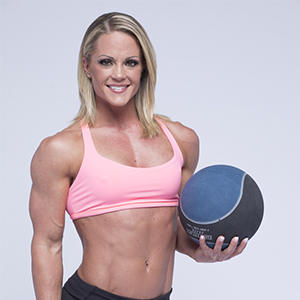By Nicole
You’re having a great streak at the gym. You haven’t skipped any days and you’re having awesome workouts. But to get even more out of your gym time, switch your focus to these three things: finding the sweet spot to make your cardio a fat-burning HIIT, knowing when and how to cheat your way to bigger gains, and getting a helping hand to keep the set going.
PUT THE “I” IN HIIT
HIIT cardio, short bouts of all out effort followed by a low-intensity recovery or rest period, has been shown to be more effective means of losing fat because it burns more calories and boosts your resting metabolic rate than steady-state cardio. So it’s no wonder I see a lot of people doing intervals on the treadmill/stairs, etc. However, I’ve also noticed that most peoples’ work intervals fall far short of maximum effort.
The key to high intensity interval training is to elevate your heart rate far above normal. You need to really challenge yourself during your work intervals. The best way to measure your level of effort is your own heart rate. That’s why I recommend wearing a heart rate monitor to make certain you are working at true high intensity levels. Aim for a target heart rate of 120-190 beats per minute.
CHEAT REPS
Loosening up your form by using a little momentum or “body English” to get a few more reps to extend the set is a technique used to increase intensity by placing greater overload on the target muscle. However, using too much momentum and reducing the load on the target muscle simply to complete reps is not the same thing as controlled cheating. That’s called bad form, plain and simple.
Here’s how I typically use cheat reps. First, I always use proper form for all my exercises. If I have to cheat at the beginning of a set, the weight is too heavy. Let’s say I’m doing standing barbell curls and my target is 8 reps. I get my 8, but want to keep the set going for another 2-3 reps. I’ll rest the bar on my legs, bend forward slightly (while still keeping my lower back flat) and use a little extra motion at the start to get the bar moving. That’s it. I don’t bend over and swing the weight up like I’m doing a reverse grip clean and press. And I’ll only do a couple of reps. Any more would require too much cheating and defeat the purpose, which is to put more stress on the target muscle.
Of course, there are some exercises I never do cheat reps with, such as squats, deadlifts, all variations of presses for chest or shoulders and bent over rows for back. I find cheat reps to be safer for single joint or isolation movements like curls and lateral raises. That doesn’t mean you can’t take compound movements past the point of failure, as I’ll show you next.
FORCED REPS
Forced reps are when your training partner helps you complete the rep to prolong the set. Let’s say you’re doing a set of bench presses and you start stalling out at the midpoint of your 10th rep. Your partner gives you just enough help to lockout the rep. Then you lower the bar and your partner helps you complete a couple of more reps.
The key to forced reps is in the amount of assistance from your training partner. Too much and you’re reducing stress on the target muscle. Too little you’re basically stuck and you end up breaking form to keep the rep going. About 2-3 forced reps is ideal, as any more than this means your training partner is doing most of the work.
Looking for more awesome training and nutrition information? Join NicoleWilkins.com for hundreds of workouts, training and nutrition tips, healthy recipes and more to help you transform your body and reach your fitness goals!
Become a Member Today!
ABOUT NICOLE
 One of the biggest names in the fitness industry, Nicole Wilkins is a world-record holding four-time Figure Olympia Champion and 2012 IFPA Personal Trainer of the Year. Nicole earned her BA in Wellness, Health Promotion and Injury Prevention at Oakland University. The owner and founder of nPower Nutrition, Nicole has helped thousands of people start living a healthier lifestyle and reach their fitness goals.
One of the biggest names in the fitness industry, Nicole Wilkins is a world-record holding four-time Figure Olympia Champion and 2012 IFPA Personal Trainer of the Year. Nicole earned her BA in Wellness, Health Promotion and Injury Prevention at Oakland University. The owner and founder of nPower Nutrition, Nicole has helped thousands of people start living a healthier lifestyle and reach their fitness goals.


